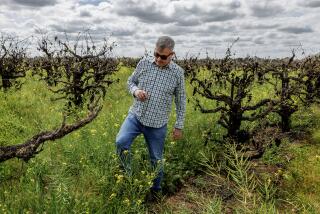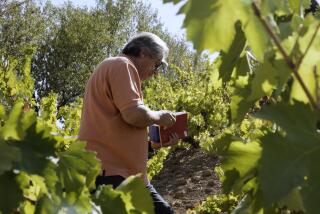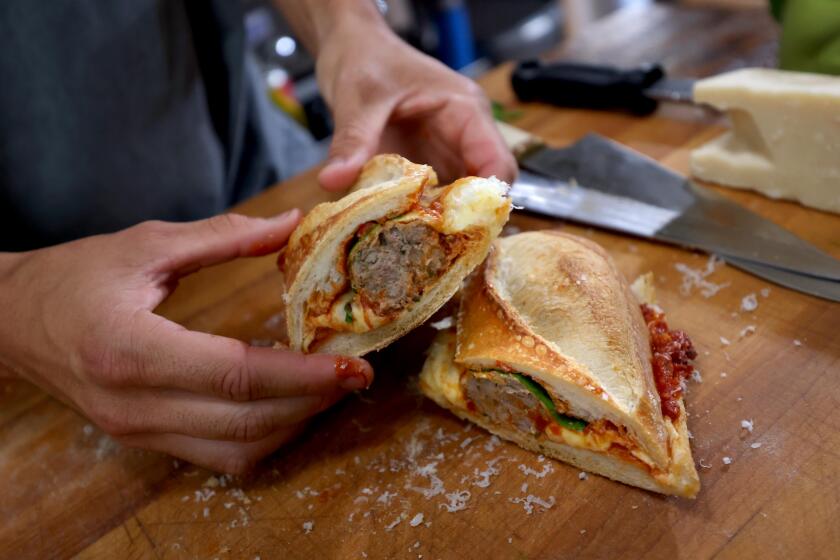Chillable red wines for your summertime drinking pleasure
When summer comes around and we start stocking the fridge, wine writers usually let a few red wines slip in there, then we think: We should write about this. How refreshing the right red wine can be with a little chill. But after a little digging, we remember that chillable red wines have been a perennial topic in these pages for almost a decade. So much for being original.
So this year, with apologies, we will not be writing about how beautiful your Beaujolais-Villages will be after half an hour on ice. Nor will we tell you how much we love dark fizzy Lambruscos, again (especially the delicious, totally dry Lambrusco dell’Emilia from Paola Rinaldini called Pronto, about $18). Not another word about Dolcetto from Dogliani (like Pecchenino’s San Luigi, about $15) or Barberas from Asti (like Vietti’s Tre Vigne, about $16).
Let’s concentrate instead on the lightest, palest wines that fall on this chill spectrum, the most wan, thin-skinned of the red varieties, the ones that literally have trouble coloring up even in the best of vintages. These wines have been spurned for decades by Robert A. Parker-inspired minions, lovers of power and concentration. But as the market steers a course away from the antipodes of Parker, light-bodied reds are enjoying a much-deserved comeback.
These varieties — Poulsard and Pineau d’Aunis in France, Trollinger in Germany, Zweigelt in Austria, Aladasturi in Georgia, and several in Italy, like Schiava, Brachetto, Frappato and Rossese — are usually indigenous, rare and somewhat obscure, but they fit a summer need like a well-worn pair of flip flops. They’ll be more substantial than rosé, but no less refreshing, and have the added benefit of more tannin to counterbalance whatever’s coming off the grill.
In the glass, these wines can be mildly disorienting. They look terribly thin, and compared with a Syrah, say, they are, but when the tannins, rendered tight and firm from the chill, strike the palate they seem to come at you like a balled fist, only to melt into something more giving, full of finesse, and mouthwatering. Here are a few to seek out.
Tibouren
This is an obscure variety grown in and near Provence, all but abandoned and ignored by most of the producers there, most of whom are rendering their rose wines to a more seductive pale peach-skin pink-orange. If you were to pour Tibouren rosé alongside, it would have a dusky, ashen color, as if someone had tried to blow smoke rings through the juice. The flavors, though, are far more substantial, a strong aromatic sensation of wind-blown soil, with fresh cherry flavors and brisk acidity. Look for Clos Cibonne, in the Cotes de Provence, who make five rosés and four red wines from Tibouren (about $27).
Grignolino
This is another obscure variety grown for the most part in the Piedmont, in northwest Italy. It falls in with the brilliant second tier of red varieties behind that region’s big three (Nebbiolo, Barbera and Dolcetto) that importers have been mining for the last couple of decades, varieties like Freisa, Pelaverga, Brachetto, Schiava and Vespolina. While many of these are chillable, Grignolino may be the lightest of them all, with a mildly floral scent that seems like a hybrid cross between conifer and rose, red cherry flavors and a slightly bitter sting of tannin (the name derives from grignole, which means “many pips.”) Francesco Rinaldi’s Grignolino d’Asti (about $18) is a classic, as is Luca Ferrari’s, but there is also a California version worth seeking out from Heitz Cellars — they of the iconic Oakville Cabernet property Martha’s Vineyard — which produces a light-bodied Napa Valley bottling from the heart of Cabernet country (about $20).
Tendu Red Blend
Steve Matthiasson’s Tendu performs the same task with a blend of Montepulciano, Barbera and Aglianico. None of these would be considered light-colored (though Barbera is decidedly thin-skinned), but Matthiasson tells me these are grown largely in the warm Dunnigan Hills north and east of Napa, in what amount to the northern foothills of the Central Valley. It’s a hot place, so hot that the vines shut down in the midst of the onslaught, which actually delays the ripening sequence and interferes with the development of pigment; acids come down in the heat, even though the fruit isn’t ripe in the conventional sense. A high cropload keeps it all affordable. The wine, sold in a liter for about $18, is tart and racy, all cherry juice and green apple freshness, and thoroughly delicious with a chill — no better picnic wine, and no better red wine to remind you not to take red wine too seriously.
Look for these wines at area wine shops such as Lou, Wine Country, Wine House, K&L Wines, Wine Stop, Larchmont Wine, Mission Wine & Spirits, and Everson Royce.
ALSO
Review: Jonathan Gold says Rossoblu may make you wish you knew a Bolognese grandmother
Plums are in season. We have recipes
What’s happening with Surfas, the great SoCal cooking shop
More to Read
Eat your way across L.A.
Get our weekly Tasting Notes newsletter for reviews, news and more.
You may occasionally receive promotional content from the Los Angeles Times.










